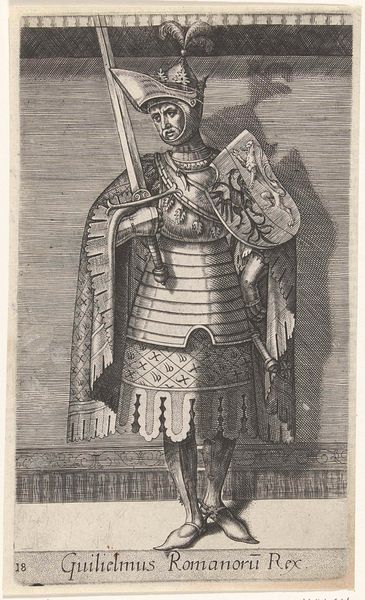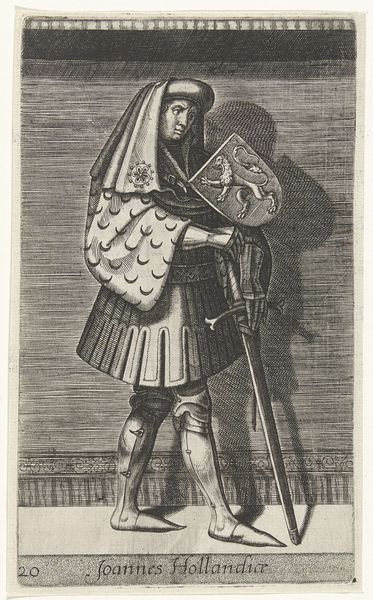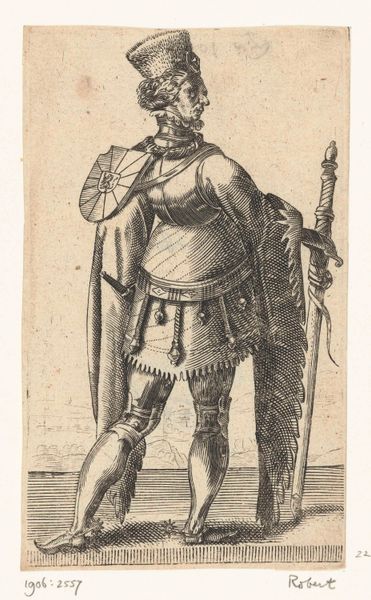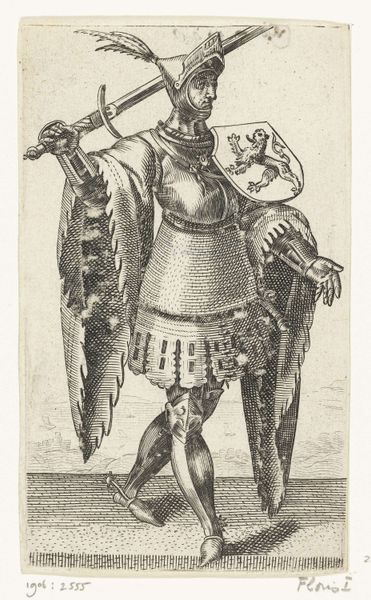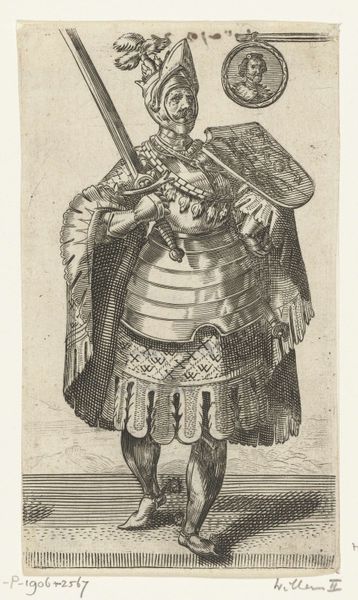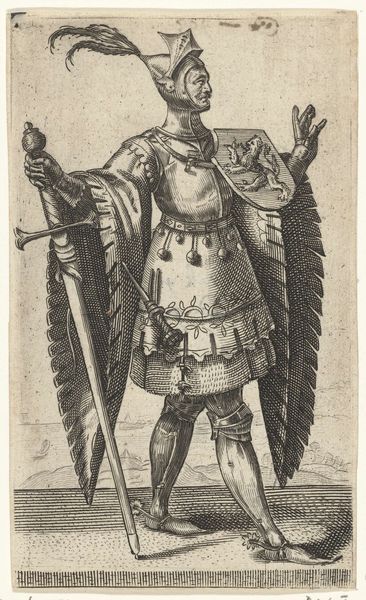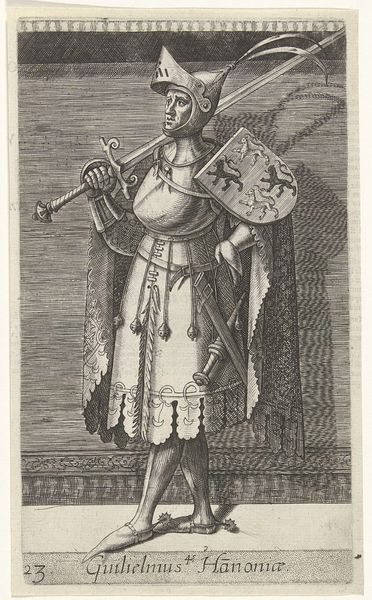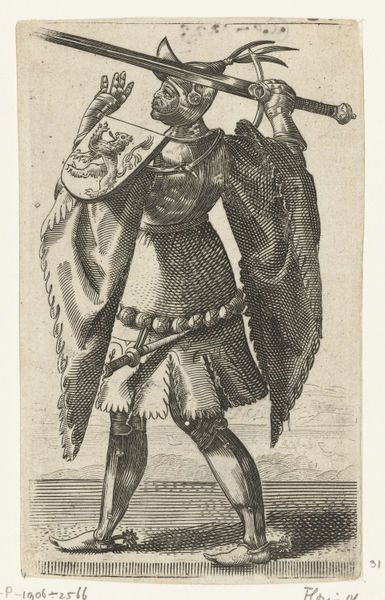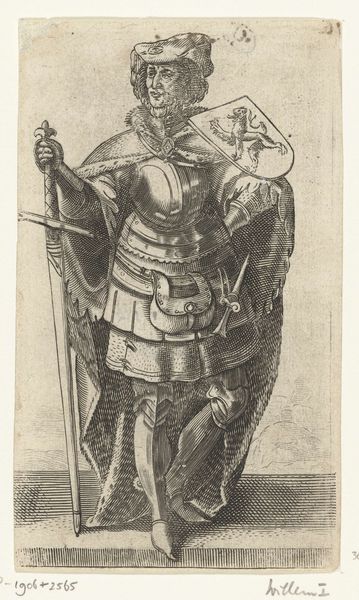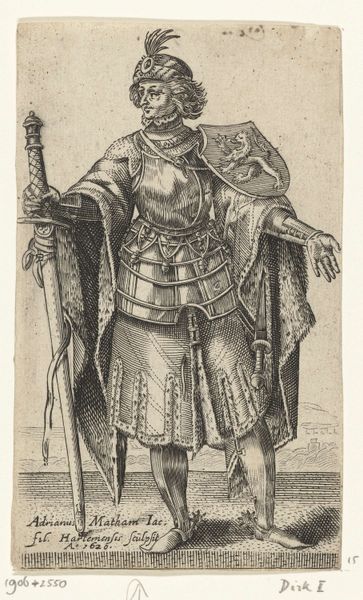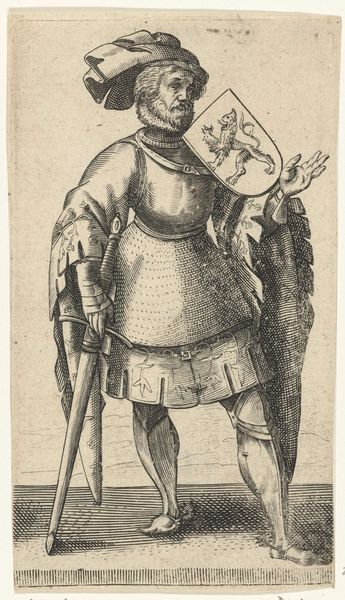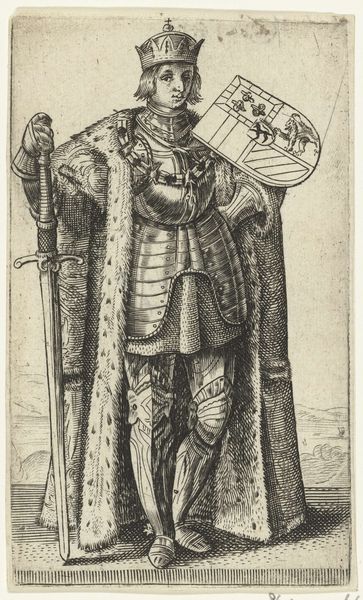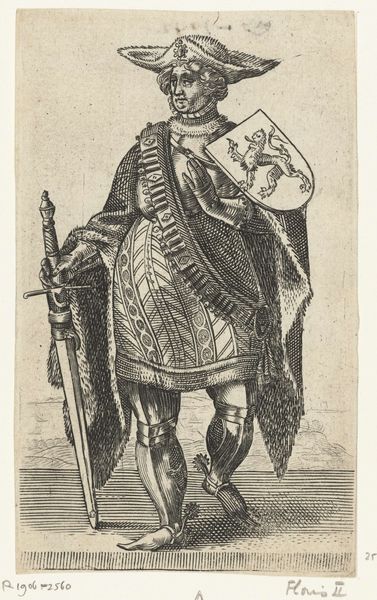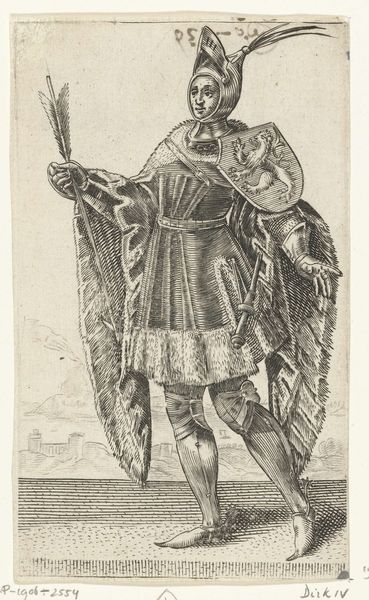
print, intaglio, engraving
#
portrait
#
medieval
# print
#
intaglio
#
pencil sketch
#
old engraving style
#
caricature
#
figuration
#
line
#
history-painting
#
northern-renaissance
#
engraving
Dimensions: height 201 mm, width 125 mm
Copyright: Rijks Museum: Open Domain
Philips Galle created this portrait of Philip the Good, Duke of Burgundy, in the late 16th or early 17th century. Dominating the composition are symbols of power and nobility: the fleur-de-lis, lions, and heraldic shields, each carefully chosen to declare lineage and authority. The fleur-de-lis, prominently displayed, is a recurring emblem of French royalty. It is an adaptation of the Egyptian Lotus, a symbol of Upper Egypt, which was adopted by the French monarchy around the 5th century to be associated with the Frankish kings. Its presence here suggests not just royal ties but a claim to a heritage that transcends mere political boundaries, tapping into a deep well of cultural memory. Lions appear repeatedly on his attire, evoking courage and strength. Like the wild animal, the lion is the king of beasts, representing dominion and royal power. The integration of these primal symbols reveals an effort to craft an image of unshakeable power. The sword adds an emotional layer, a tangible representation of readiness and capability to defend. It is an assertion of power. Such symbols are not merely decorative; they are powerful archetypes that engage viewers on a subconscious level. It evokes our deepest fears and desires related to authority. The symbolic language connects us to enduring human concerns with power, heritage, and identity.
Comments
No comments
Be the first to comment and join the conversation on the ultimate creative platform.
